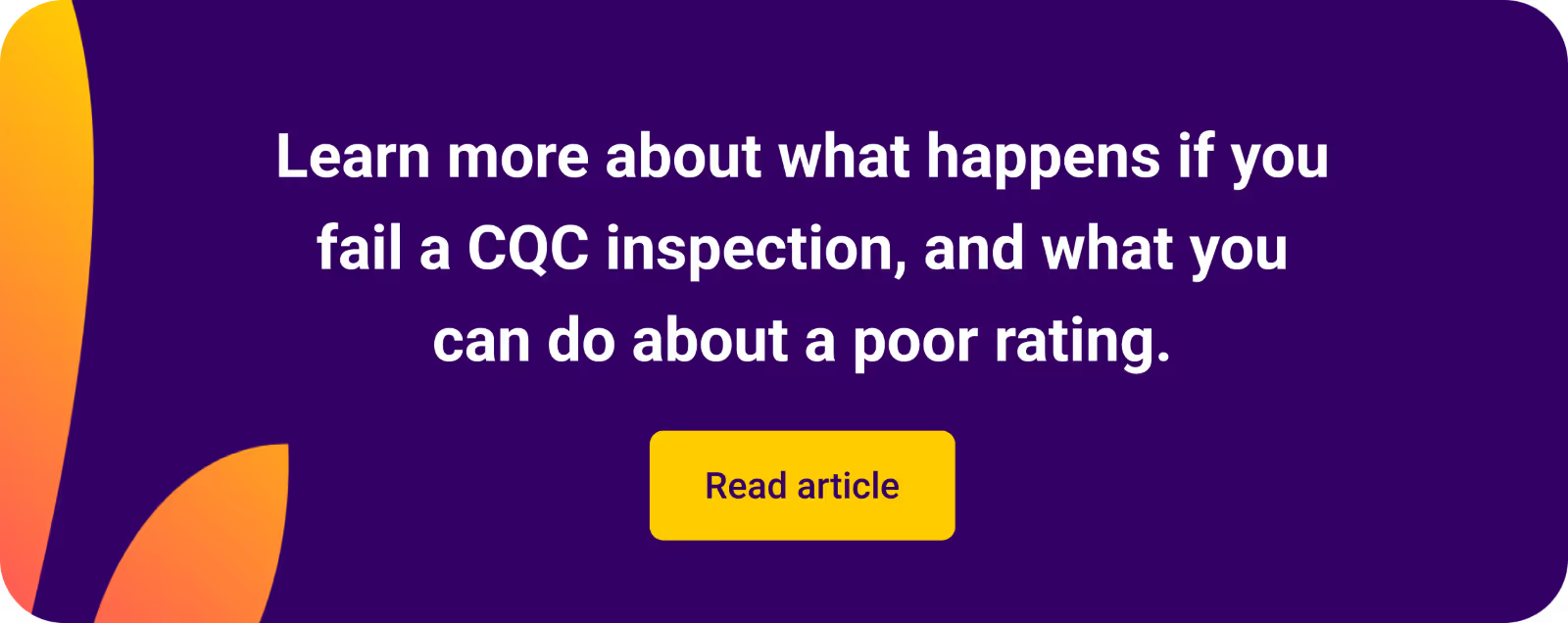I often speak about the pros and cons of risk assessments, and have been asked a few times by managers regarding how to reduce and mitigate certain risks.
In this week’s blog post, I'll share my insights on why risk assessments are important, with tips on how care teams can effectively mitigate risks.
Why are risk assessments important?
Risk assessments should be used to enhance the quality of life for those we support.
They should be used to anticipate, identify and mitigate potential risks that could incur during an activity, either within a service or within the community.
However, risk is not just physical and can also include impact to wellbeing, mental health, dignity and general safety.
What are the benefits of risk assessments for risk mitigation?
Risk assessments have a number of positive benefits for mitigating risks, but here are my top three.
1. Increased safety
This one seems obvious, but risk assessments are designed to keep people safe and prevent injuries.
2. Increased personalisation
Risk assessments allow people to do what they want to do, whilst managing any associated risks that come from them.
3. Improved quality care
Increasing the personalisation of someone’s care will result in a tailored service, and therefore will meet their wishes and specific needs, and enhance the quality of care being provided.

What happens if you don’t have a risk assessment?
There are many risks when you do not have effective risk assessments in place. Here are a few things that can happen when neglecting to conduct them.
Increased risk
The purpose of a risk assessment is to identify and mitigate risks. If you do not have them in place, you increase the risk of potentially harming others and therefore increase the number of incidents and accidents.
Poor level of care being provided
There is an increased level of incidents and risks correlated with poorer quality of care, compared to a service with proactive risk management.
Poor reputation
Increased incidents or accidents will result in people being unhappy with the care they or their loved ones are receiving, and will lead to concerns, complaints, safeguarding alerts and negative reviews.
Risk of fines or penalties
Failure to mitigate risks can lead to fines or penalties.
An example of this could be if it were a risk under health and safety. According to the CQC, one care provider failed to have an up-to-date environmental risk assessment, failed to have an individual risk assessment, and failed to implement other measures to mitigate risk in line with Health and Safety Guidance.
This resulted in a court fining the service £16,500, and a victim surcharge of £170. On top of this, the Registered Manager was fined £1,000 and a victim surcharge of £170.
10 tips to effectively mitigate risks
So, now that we understand the benefits of risk assessments and the downsides of not having one in place, what can care teams do to mitigate risks?
Luckily, there are a number of things you can do. Here a few areas I would start considering:
1. Staff training
Ensure you and your team are trained (and refreshers undertaken) in a risk assessment training course. Make sure this is not a tick-box exercise and that risk management is embedded into your culture. Ensure an open culture where staff can escalate when they feel more could be done, but also when a new risk is noticed, that they are proactive in reporting it. Not only is risk assessment training beneficial, but also personal centred care and person centred care planning.
2. Stay up to date with regulations
Check out the CQC website for more learning from safety incidents and use this as part of team meetings to help raise awareness.
Log my Care also provide great resources to help you stay on top of CQC changes.
3. Review all current risk assessments
Look at what risk assessments you have in place and ensure they are thorough.
You should also ask your team to look at them. Ask them to think about other risks that would be associated. You’d be surprised by the feedback from operational staff compared to ones in an office.
4. Triangulate the care plans and risk assessments
Ensure that you go through the care plans, and finely go through the support people need vs a risk assessment being in place.
5. Embed a culture of safety
Create an environment where people will communicate incidents, accidents and near-misses. Ensure you have reporting systems for lessons learnt, but also a section around risk assessments to prompt you to remember.
6. Involve professionals, individuals and families
Involving others will allow for a collaborative approach but also allows for others to share concerns about any risks or factors that need to be considered.
7. Use technology
There are so many new digital solutions that can help create great risk assessments, and use data to highlight trends and lessons learnt.

8. Documentation
This is key, so make sure you keep thorough documentation of risk assessments, the process for creating these (who was involved, when and how) and actions taken to mitigate the risk.
9. Review
Make sure you review the care plans, the risk assessments and any outstanding actions.
10. Think about the additional risks
It isn’t just the individual risk assessments than need to be completed. You should also consider the following risks:
- Environmental – for example, think about risks inside the person’s own home, bedroom, or care home, plus slips/trips, falls, burns/scalds, electrocution, unmaintained equipment, incorrect bed height, COSHH, and more.
- External – such as slips/trips, poor lighting, remote location, or flooding.
- Moving and handling – risks associated to people and your staff.
- Fire safety.
- Legionella.
- Medication – what happens if there is an overdose, missed medication, or wrong medication.
- Behaviour management – supporting people with challenging behaviour can increase risk levels to the person themselves, but also your staff. Having a behaviour risk assessment can be helpful for this.
- Food – including allergies, burns, choking, cross-contamination, preparation risks, or food poisoning.
- Equipment use – are staff trained, is equipment visually checked each time it's used, is it inspected, etc.
- Bed rails – this one is often overlooked but so important due to the high risk of entrapment and suffocation.
- Infection prevention – think about how many risk assessments we did for COVID19, but this should be standard for all known infections, such as influenzas and airborne infections.
- Staffing levels – this is often overlooked but without the right number of staff, there is a huge increased risk to the service delivery and operations.
Conclusion
Risk assessments do not need to be scary or complicated, but you just need to be thorough.
Think about what you are reviewing, what are the known (and possible) risks, and then think about everything you can do to either reduce those risks completely or prevent them.
Make this a team effort and get everyone involved. Once trained and up-skilled, get others to have a go – at the end of the day, your team could create the foundations for you to check, build on and approve.
Found this information useful?
Subscribe to The Handover newsletter by Sam Hussain, CEO of Log my Care, for valuable social care insights and resources.




